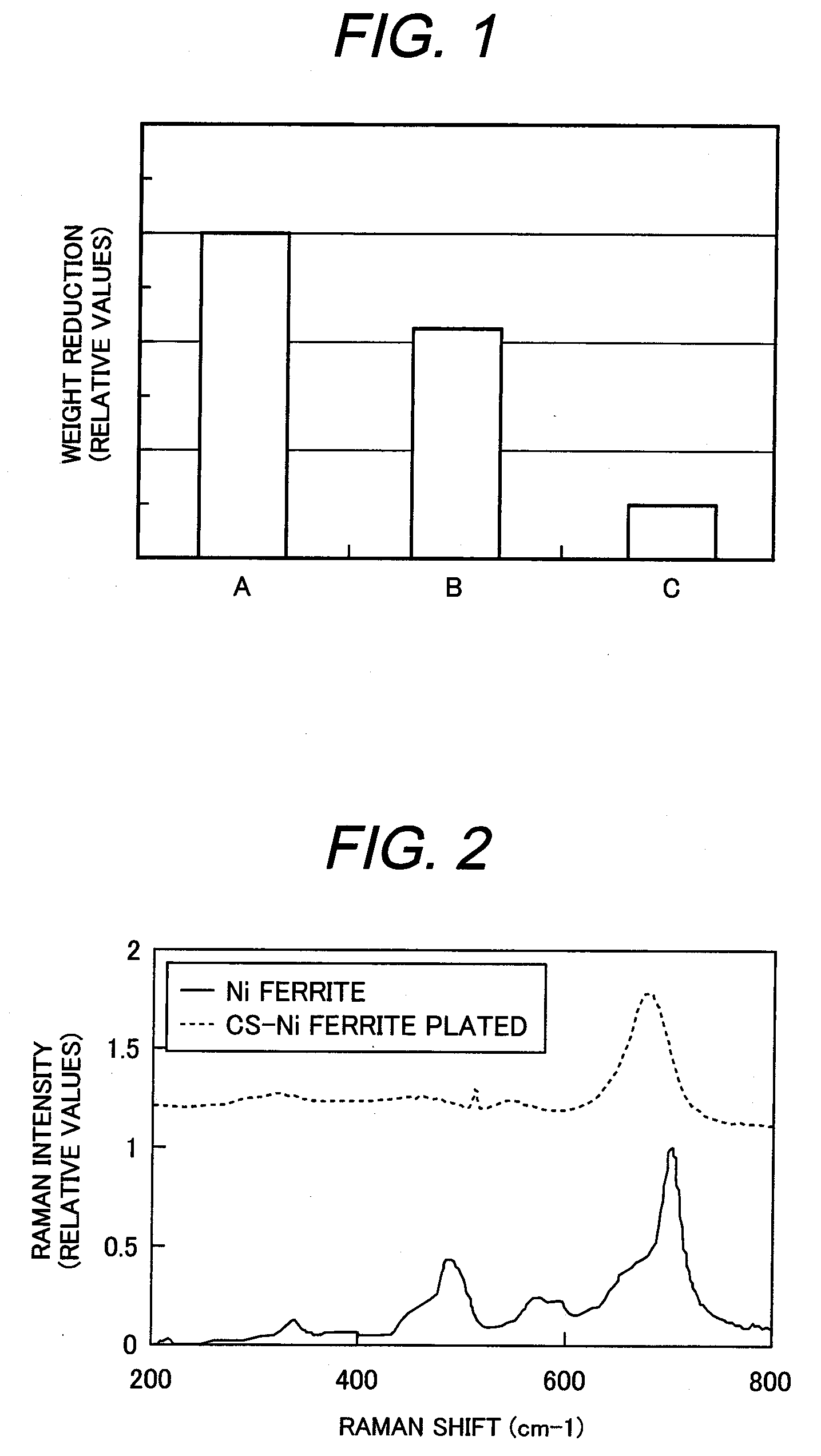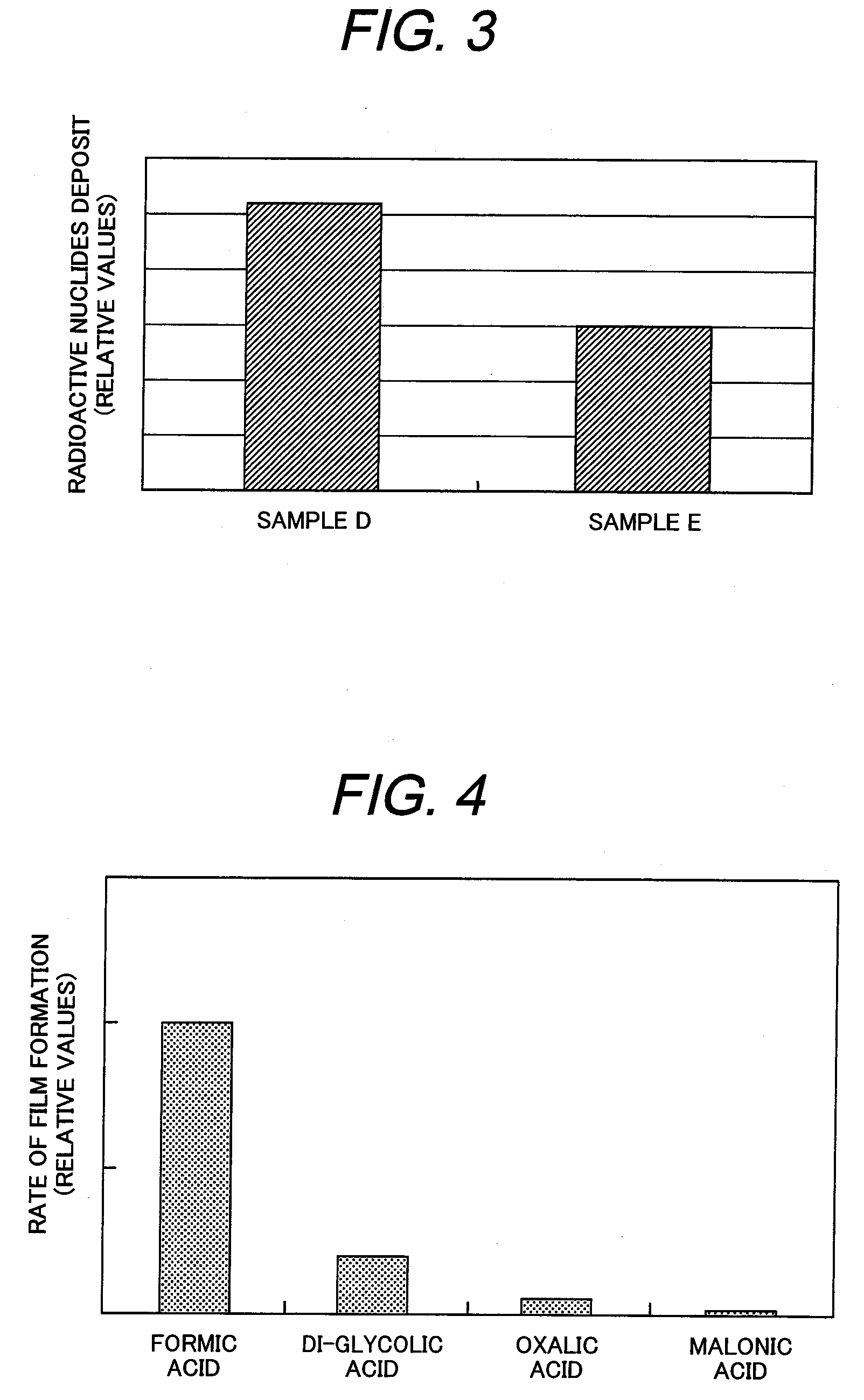Method and apparatus for suppressing corrosion of carbon steel, method for suppressing deposit of radionuclide onto carbon steel members composing a nuclear power plant, and film formation apparatus
a nuclear power plant and carbon steel technology, applied in nuclear engineering, emergency protection arrangements, nuclear elements, etc., can solve the problems of increasing the radioactive waste of the condensate purification apparatus, the inability of the plant and the inability to suppress the corrosion of metals. , to achieve the effect of suppressing the corrosion of carbon steel members and effectively suppressing the deposit of radionuclides
- Summary
- Abstract
- Description
- Claims
- Application Information
AI Technical Summary
Benefits of technology
Problems solved by technology
Method used
Image
Examples
embodiment 1
[0075]FIG. 6 is a flow chart showing a method for suppressing corrosion of carbon steel of an embodiment 1 which is one preferred embodiment of the present invention. FIG. 7 is an explanatory drawing showing the connection of a film formation apparatus to the feed water pipe of the BWR plant when the method of suppressing corrosion of carbon steel members of FIG. 6 is applied to the feed water of the BWR plant. FIG. 8 is a detailed structural diagram showing the film formation apparatus of FIG. 7.
[0076]As shown in FIG. 7, the BWR plant comprises a reactor 1 having a reactor pressure vessel loading a plurality of fuel assemblies filled with nuclear fuel materials which generates nuclear fission, a main steam pipe 2 connected to the reactor 1, a steam turbine 3 connected to the main steam pipe 2, and a condenser 4 connected to the steam outlet of steam turbine 3. Steam generated in the reactor is supplied to the steam turbine 3. The steam exhausted from the steam turbine 3 is condense...
embodiment 2
[0104]Embodiment 2 is different from Embodiment 1 in that Embodiment 2 forms nickel ferrite films and Embodiment 1 forms the magnetite films.
[0105]Aforesaid Embodiment 1 describes the procedure and the apparatus to form the magnetite film on the inner surface of the carbon steel pipes of the feed water system. In the result (see FIG. 1) of a test of dipping samples in pure water at ordinary temperature, both magnetite and nickel ferrite films can obtain almost the same corrosion suppressing effect. However, in the actual service environment of the feed water system which uses pure water at high temperature, the nickel ferrite films have longer corrosion suppressing effect than the magnetite films because the solubility of the nickel ferrite is less than that of the magnetite. The embodiment 2 forms the nickel ferrite film on the surface of wetted surfaces of the carbon steel members composing the nuclear power plant.
[0106]FIG. 9 shows a method of suppressing corrosion of carbon stee...
embodiment 3
[0110]Embodiment 3 is different from Embodiment 1 in that Embodiment 3 connects the film formation apparatus 30 to the feed water pipe 10 of the secondary system of a PWR plant but Embodiment 1 connects the film formation apparatus 30 to the feed water pipe 10 of the BWR plant. FIG. 11 is a structural diagram showing Embodiment 3 that connects the film formation apparatus 30 to the feed water pipe in the secondary system of the PWR plant. FIG. 11 shows only the secondary system including a steam generator 69 but does not contain the configuration of a primary system of the PWR plant.
[0111]Embodiment 3 is different from Embodiment 1 (for example, FIG. 7) in that a deaerator 70 is provided with the feed water pipe 10 between the low pressure feed water heater 8 and the high pressure feed water heater 9. The deaerator 70 is used to remove gas components from the feed water. Embodiment 3 is similar to Embodiments 1 and 2 as for a method of connecting the film formation apparatus 30 to t...
PUM
| Property | Measurement | Unit |
|---|---|---|
| Temperature | aaaaa | aaaaa |
| Temperature | aaaaa | aaaaa |
| Fraction | aaaaa | aaaaa |
Abstract
Description
Claims
Application Information
 Login to View More
Login to View More - R&D
- Intellectual Property
- Life Sciences
- Materials
- Tech Scout
- Unparalleled Data Quality
- Higher Quality Content
- 60% Fewer Hallucinations
Browse by: Latest US Patents, China's latest patents, Technical Efficacy Thesaurus, Application Domain, Technology Topic, Popular Technical Reports.
© 2025 PatSnap. All rights reserved.Legal|Privacy policy|Modern Slavery Act Transparency Statement|Sitemap|About US| Contact US: help@patsnap.com



